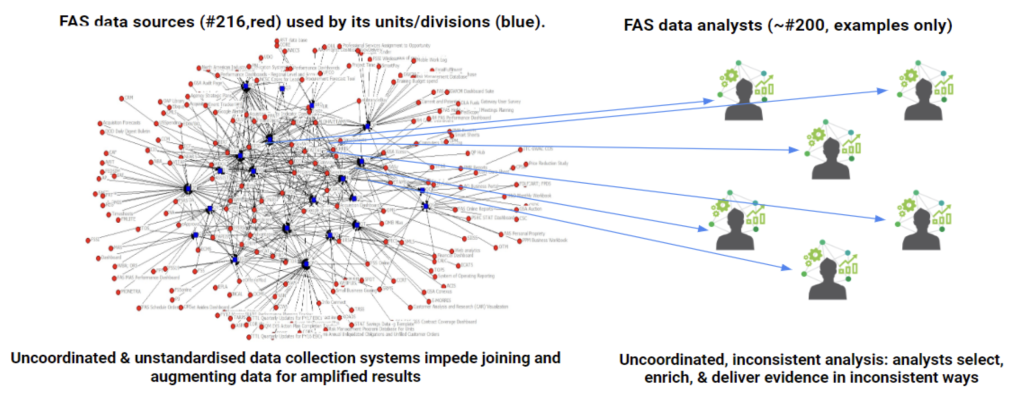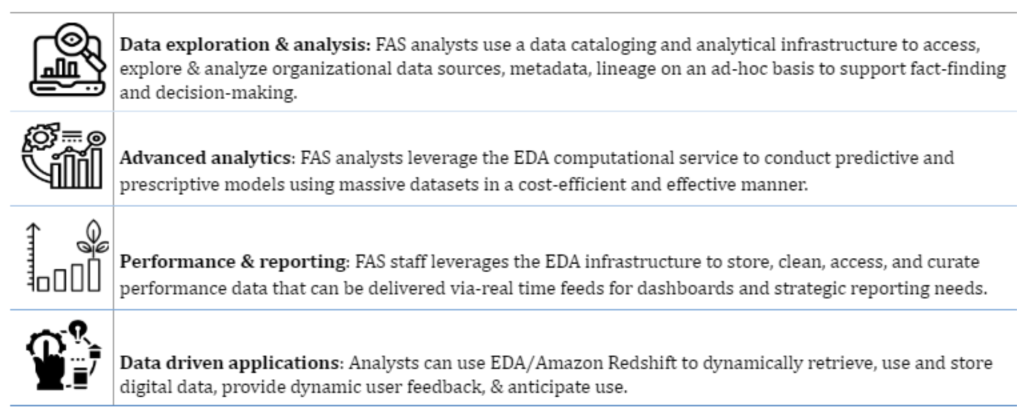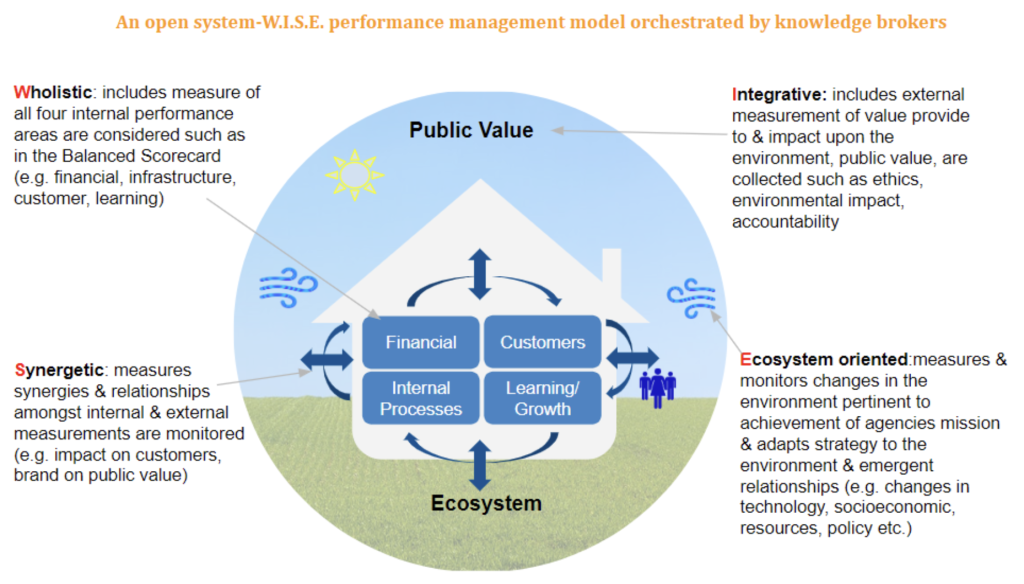Hello! We are Ioana Munteanu, Evidence Governance Lead, and Clifton Best, Chief Data Architect, at FAS. For the past five years we’ve worked to build evidence capabilities, including evaluating evidence requirements, observing evidence challenges, and developing an evidence capacity framework and data infrastructure. Our objective is to empower staff across all levels and functions to connect strategic needs with data and analytics to support evidence-based decisions.
Lessons Learned & Rad Resources:
FAS engaged an interdisciplinary team of leaders, managers, analysts, and data engineers to build an evidence management strategy and an operating data infrastructure that orchestrates a dynamic demand and supply of evidence. The strategy connects policy evidence needs with data products through a robust data source infrastructure and shared collaborative analytics environment.
1. The case for change: FAS found that disjointed, ad-hoc evidence building activities resulted in internal inefficiencies and impeded the use of evidence to aid decisions.

2. The solution: The following framework connects programmatic evidence needs to a data infrastructure that delivers the needed data products.

3. The process: FAS’s process orchestrates the demand and supply of evidence.

4. The infrastructure: FAS’s data environment supports the delivery of evidence based data products. FAS Enterprise Data Architecture (EDA) offers three core services (data management service, computational service, and business intelligence presentation layer) that stores, organizes, accesses, and supports analyzing the data according to the analytical data product needed.

Hot Tip
The FAS data and evidence challenges were documented to inform an infrastructure that supports dynamic performance management (PM). This PM approach considered organizations as open systems that continuously adapt their strategy to its environment to effectively fulfill their citizens’ centric missions and is W.I.S.E.
- (W)holistic- internally oriented
- (I)ntegrative- of external impacts
- (S)ynergetic- of interdependencies among system components
- (E)cosystem oriented- of adaptability to environments

The scope of the Data and Evidence Governance Initiative was further expanded to include all evidence building activities. This viewpoint was articulated in an article published in Public Administration Review: Leading and Learning Thought Performance Management Article.
If you’d like to learn more, email me at m.ioana@gmail.com.
The American Evaluation Association is hosting Integrating Technology into Evaluation Topical Interest Group (ITE TIG) Week. The contributions all this week to AEA365 come from the ITE TIG members. Do you have questions, concerns, kudos, or content to extend this AEA365 contribution? Please add them in the comments section for this post on the AEA365 webpage so that we may enrich our community of practice. Would you like to submit an AEA365 Tip? Please send a note of interest to AEA365@eval.org. AEA365 is sponsored by the American Evaluation Association and provides a Tip-a-Day by and for evaluators. The views and opinions expressed on the AEA365 blog are solely those of the original authors and other contributors. These views and opinions do not necessarily represent those of the American Evaluation Association, and/or any/all contributors to this site.
